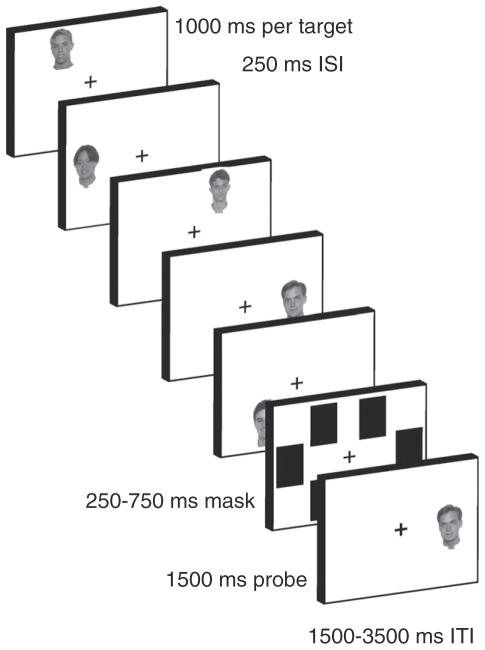Fig. 1.
Task depiction. On each trial, subjects were sequentially presented five gray-scale target faces. Targets were presented in one of six locations arranged hexagonally around fixation. After a brief mask, a recognition probe appeared to which subjects made a match/non-match decision. Variations in the serial position (SP) of the probe indexed access to different putative states of memory. Probes matching the most recently presented target (SP −1) were presumed to measure access to the focus of attention. Subsequently distant probes up to capacity-limits were presumed to measure access to the direct access region (e.g. SPs −2 and −3). Probes distant to these were presumed to measure access to the activated portion of long-term memory (e.g. SPs −4 and −5).

